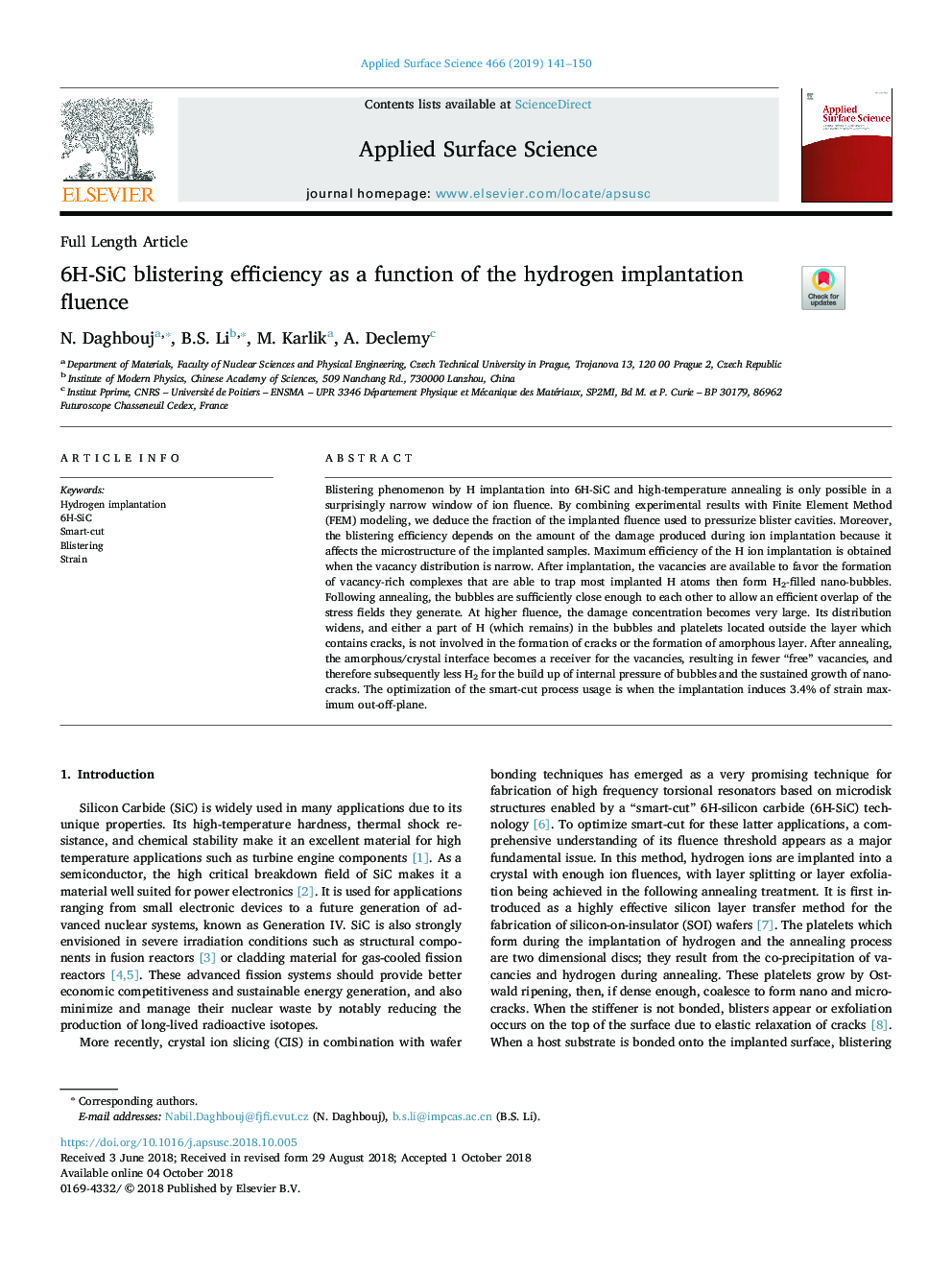| Article ID | Journal | Published Year | Pages | File Type |
|---|---|---|---|---|
| 11001921 | Applied Surface Science | 2019 | 10 Pages |
Abstract
Blistering phenomenon by H implantation into 6H-SiC and high-temperature annealing is only possible in a surprisingly narrow window of ion fluence. By combining experimental results with Finite Element Method (FEM) modeling, we deduce the fraction of the implanted fluence used to pressurize blister cavities. Moreover, the blistering efficiency depends on the amount of the damage produced during ion implantation because it affects the microstructure of the implanted samples. Maximum efficiency of the H ion implantation is obtained when the vacancy distribution is narrow. After implantation, the vacancies are available to favor the formation of vacancy-rich complexes that are able to trap most implanted H atoms then form H2-filled nano-bubbles. Following annealing, the bubbles are sufficiently close enough to each other to allow an efficient overlap of the stress fields they generate. At higher fluence, the damage concentration becomes very large. Its distribution widens, and either a part of H (which remains) in the bubbles and platelets located outside the layer which contains cracks, is not involved in the formation of cracks or the formation of amorphous layer. After annealing, the amorphous/crystal interface becomes a receiver for the vacancies, resulting in fewer “free” vacancies, and therefore subsequently less H2 for the build up of internal pressure of bubbles and the sustained growth of nano-cracks. The optimization of the smart-cut process usage is when the implantation induces 3.4% of strain maximum out-off-plane.
Related Topics
Physical Sciences and Engineering
Chemistry
Physical and Theoretical Chemistry
Authors
N. Daghbouj, B.S. Li, M. Karlik, A. Declemy,
